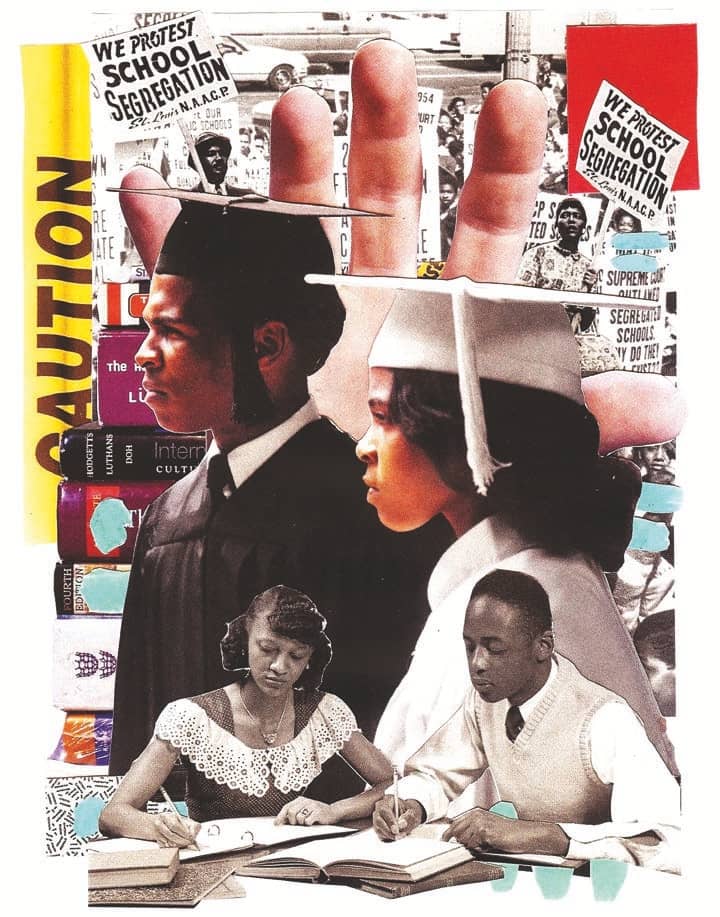
One afternoon, during my freshman year at Alabama A&M University, my homework was piling up, and I was feeling antsy. I needed a change of scenery from Foster Hall. I’d heard that the library at the University of Alabama at Huntsville, 10 minutes away, was open three hours longer than our own. So I loaded up my backpack, ran down the stairs—the dorm’s elevator was busted—and headed across town.
Founded in 1875 to educate Black students who had been shut out of American higher education, A&M was a second home for me. My mom had gone there; my uncle had been a drum major in the ’80s; my sister was on the volleyball team. But when you’re home long enough, you start to notice flaws: The classroom heaters were always breaking down, and the campus shuttle never seemed to run on time when it was coldest out. When I arrived at UAH, I was shocked. The buildings looked new, and fountains burst from man-made ponds. The library had books and magazines I’d never heard of—including the one for which I now write.
Something else quickly became obvious: Almost every student I saw at UAH was white. That day, a little more than a decade ago, was my introduction to the bitter reality that there are two tracks in American higher education. One has money and confers prestige, while the other—the one that Black students tend to tread—does not.
This story is from the September 2021 edition of The Atlantic.
Start your 7-day Magzter GOLD free trial to access thousands of curated premium stories, and 8,500+ magazines and newspapers.
Already a subscriber ? Sign In
This story is from the September 2021 edition of The Atlantic.
Start your 7-day Magzter GOLD free trial to access thousands of curated premium stories, and 8,500+ magazines and newspapers.
Already a subscriber? Sign In

THE AIRPORT-LOUNGE ARMS RACE
Inside the ever more extravagant competition to lure affluent travelers

Hypochondria Never Dies
The diagnosis is officially gone, but health anxiety is everywhere.

Miranda July's Weird Road Trip
The author's midlife-crisis novel is full of estrangement, eroticism, and whimsy.

The Wild Blood Dynasty
What a little-known family reveals about the nation's untamed spirit

The Engrossing Darkness of The Crow
Can a cult hit point the way forward for the beleaguered comic-book movie?

The Godfather of American Comedy
The funniest people on the planet think there's no funnier person than Albert Brooks.

The History My Family Left Behind
A gun, a lynching, and an exodus from Mississippi

Ozempic or Bust
America has been trying to address the obesity epidemic for four decades now. So far, each new \"solution\" has failed to live up to its early promise.

THE ART OF SURVIVAL
In living with cancer, Suleika Jaouad has learned to wrench meaning from our short time on Earth.

DEMOCRACY IS LOSING THE PROPAGANDA WAR
AUTOCRATS IN CHINA, RUSSIA, AND ELSEWHERE ARE NOW MAKING COMMON CAUSE WITH MAGA REPUBLICANS TO DISCREDIT LIBERALISM AND FREEDOM AROUND THE WORLD.